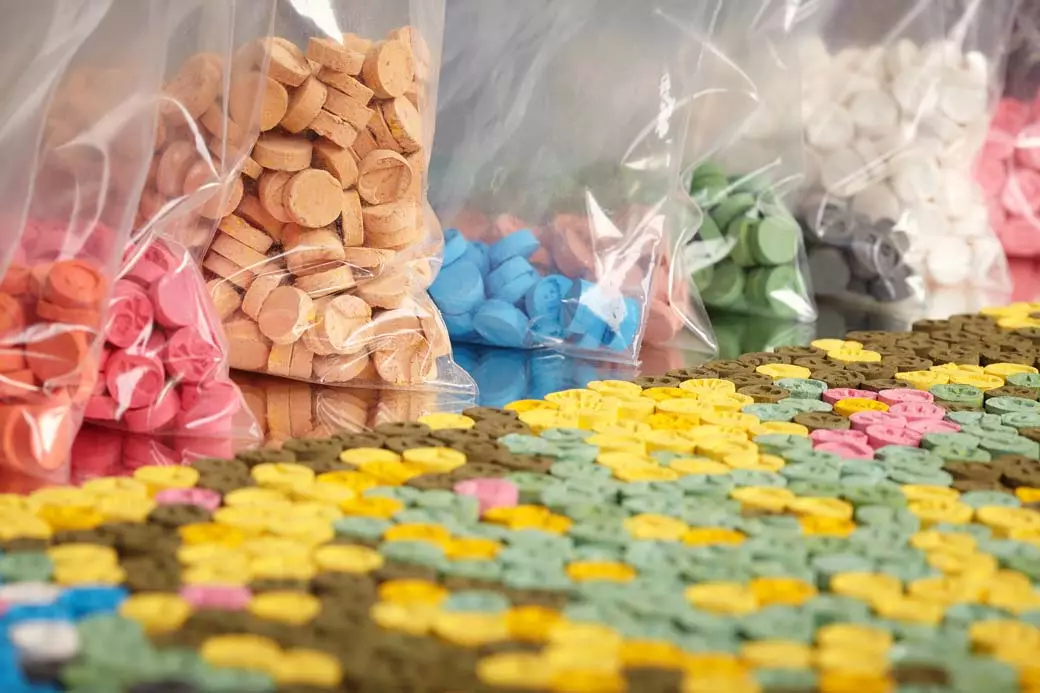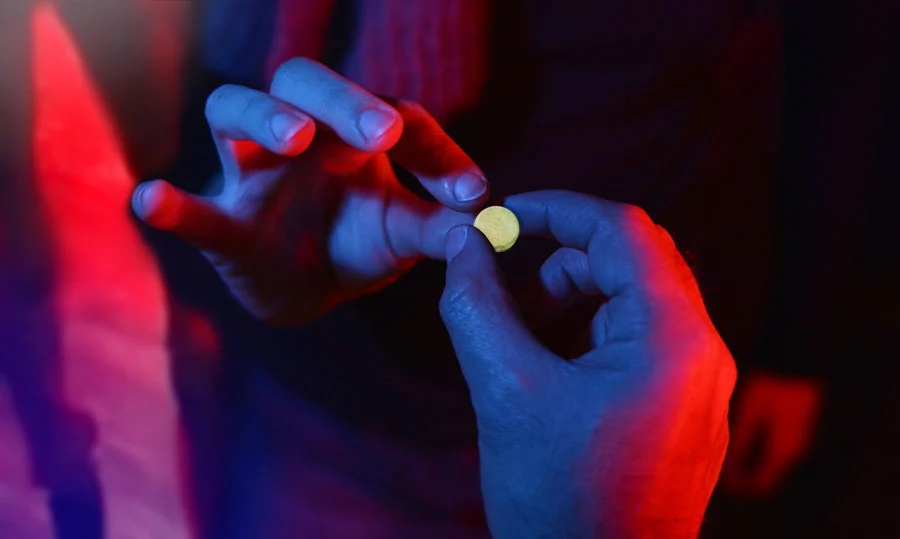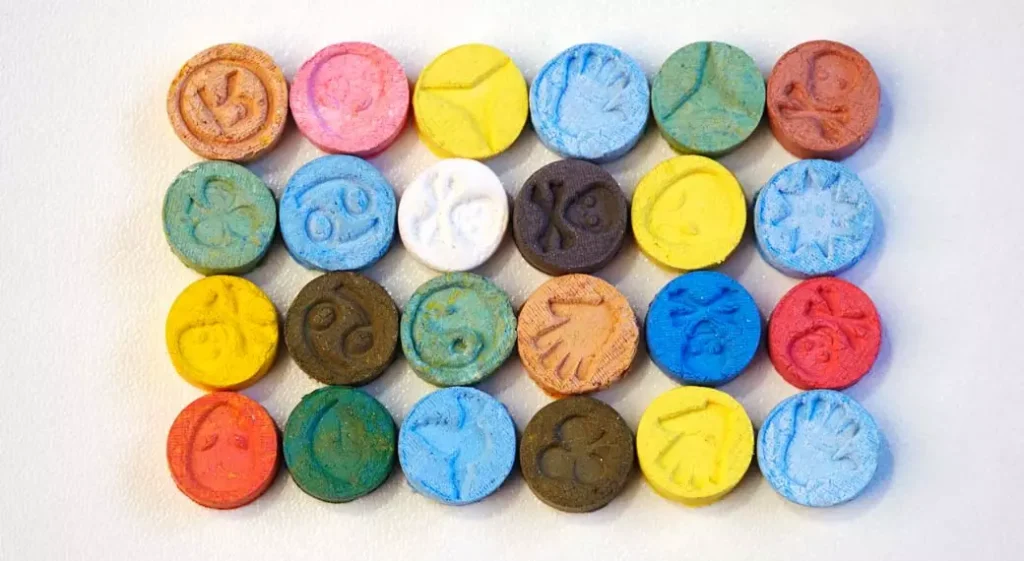How Long Does Ecstasy Stay in the System?

A Club Drug with Consequences
Ecstasy is a dangerous drug that can cause serious health problems. Ecstasy is also known by the street names “X,” “E,” “XTC,” and “Disco biscuits.”
This drug abuse can cause damage to your brain and nervous system and lead to long-term psychological problems, including depression, anxiety, paranoia, confusion, and memory loss.
It is essential to know what Ecstasy does to your body to understand the dangers of using this drug. Ecstasy is a synthetic amphetamine-like stimulant that produces feelings of increased energy, pleasure, emotional warmth, and empathy toward others. Users also report seeing colors more vividly and being able to stay awake for days at a time without sleeping.
The effects of ecstasy last between 3 and 6 hours after taking it, but some users may experience hangover effects for up to 24 hours or longer after using this drug.
Experience True Healing
Our deeply-caring staff and the surrounding natural beauty offer an unparalleled healing experience.
How Long Does Ecstasy Stay in Your System?
This question depends on how long ago you took the drug and how much you took. If you have taken ecstasy recently (within 24 hours), its effects will be present in your system during testing and afterward.
Factors such as the amount of drug taken, frequency of use, and whether any other drugs were taken alongside it will all play a part in determining how long it takes for the drug to leave your body. As well as this, how you take ecstasy (i.e., by swallowing tablets or snorting powder) can also affect how long it stays in your system and how long you are likely to experience its effects.
Additionally, it takes women and men with higher amounts of body fat much longer to eliminate the drug from the body. The slower the metabolism, the longer the expulsion time.
Ecstasy vs Molly: The Differences
Ecstasy is the street name for MDMA, a synthetic drug with stimulant and hallucinogenic properties. Ecstasy is also known as E, XTC, X, or Molly. Ecstasy comes in tablet form, but it can be snorted or taken as a capsule.
Molly is a powdered form of MDMA that has been sold in capsules or pressed into pills. It is sometimes used to refer to pure MDMA powder.
MDMA was first patented in 1912 by the German pharmaceutical company Merck as an appetite suppressant. It wasn’t until the 1970s that it was marketed as a psychoactive drug.
Today, MDMA is one of the most popular recreational drugs globally. In 2015 alone, over 22 million people between ages 12 and 25 had used ecstasy at least once. MDMA acts as both a stimulant and psychedelic, activating regions in the brain associated with pleasure, memory formation, and concentration.
Because of its chemical makeup, the effects and timeline of the drug vary significantly from person to person.
What are Ecstasy Effects and How Long Does it Last?

Some users take ecstasy for its euphoric effects, but others use it to enhance sexual experiences. While the drug does not usually cause physical dependence, there is some evidence that chronic use can lead to psychological dependence on the drug.
The timeline of intoxication with ecstasy generally follows this pattern:
- A user will feel an initial rush within 10 minutes after taking the drug — this can last up to half an hour — followed by heightened energy levels and increased sociability for up to 2 hours (2).
- The user will peak for about four hours, at which point the high will be the most intense. This period includes an altered perception of reality and sometimes hallucinations.
- After about five hours, the high will slowly decline as the user enters the last stage before the crash.
Additional effects include:
- Feelings of increased empathy towards others
- Hyperactivity or restlessness
- Increased heart rate and blood pressure
- Heightened sensory perception (e.g., brighter colors)
- Nausea, chills, sweating, and muscle cramping
- Dilated pupils
As we stated earlier, the most critical factor in determining how long ecstasy remains in the body is the length of abuse, the amount of ingestion, the addition of other drugs, sex, and weight.
How Long Can Ecstasy Be Detected in Urine, Blood, Saliva, and Hair?
Ecstasy can be detected for up to 5 days in the urine, three days in blood and saliva, and nine days in hair. Probation officers, hospitals, and potential employers may use these methods to determine whether you’re abusing the drug.
Ecstasy can be detected for up to 24 hours after taking it orally or intravenously (IV). However, 2-4 days after taking the drug by mouth or IV, MDA and HMMA may still be present in the blood. If you test positive during this time frame, it doesn’t necessarily mean you took MDMA recently; it could indicate that your metabolism is slow or your body has difficulty breaking the drug down.
Ecstasy and Molly Adulterants to Be Aware Of
One of the most dangerous characteristics of MDMA, more specifically when it’s formulated as ecstasy in pill form, is the potential impurities contained in the drug. Because suppliers can press the pills themselves, the number of possible adulterants they can use to maximize their profits is nearly unlimited.
However, certain substances are typically found more often than others. Some of the most frequently discovered adulterants include:
- Cocaine
- Crystal meth
- Baby laxatives
- Benzos
- LSD
- Mescaline
- Heroin
- PCP
- Ketamine
One of the deadliest substances found in MDMA is fentanyl, which is a practice that’s becoming more common as time goes on. The number of cases of fentanyl discovered in other drugs continues to increase.
It’s unknown why manufacturers are lacing batches with fentanyl, especially considering the two drugs fall into different categories. It’s assumed it’s done to stretch profits, but the logic behind this practice makes little sense when considering the stark contrast in effects and potentially fatal consequences.
Experience True Healing
Our deeply-caring staff and the surrounding natural beauty offer an unparalleled healing experience.
Is MDMA Addictive?

Many people argue whether MDMA is addictive. A larger demographic would say that this substance isn’t addictive, but a simple breakdown may prove otherwise.
When you examine the drug alongside the criteria of what makes a substance addictive, significant evidence leans toward the fact of it indeed being addictive:
- The drug seriously alters the user’s state of consciousness and begins with minor amounts and gradually increases over time.
- Users can experience periods of depression or irritability when they don’t have the drug after dependence takes hold
- It’s possible to use the drug perpetually until the user feels like they can no longer function without using the substance in question.
- During later stages of abuse, the user may hide the fact that they abuse the drug or lie and claim they use it much less than they actually do.
Indeed, ecstasy doesn’t carry the risk of physical dependence as opioids like methadone, heroin, or fentanyl. However, users have experienced periods of physical discomfort during the detox process, regardless of their level of severity.
Furthermore, just because a substance doesn’t have a physical withdrawal period doesn’t mean it’s not addictive. Mental addiction and dependency can be just as bad, if not worse, than any physical addiction.
Dual Diagnosis Treatment and Effective Ecstasy Addiction Care
Because ecstasy is a drug that weighs so heavily on feelings and social interaction, along with the harmful side effects that come with prolonged use, dual diagnosis treatment is often necessary as a form of therapy.
Users who experience bouts with depression often experience relief from taking ecstasy because of the feelings of joy it brings. It’s also used commonly by people who have a social anxiety disorder or have issues with feeling or acting awkward in public.
If the mental disorder didn’t exist before beginning the abuse of MDMA, it’s also possible for users to develop problems directly resulting from the misuse.
MDMA can do a large amount of damage to parts of the brain that control cognitive function. Challenges with memory and the ability to process clear thoughts can manifest as issues with focus and attention.
An effective dual diagnosis program can provide significant results for these conditions, especially when combined with a comprehensive, holistic healing plan that includes many treatments and activities.
Find a Calm and Healing Holistic Rehab at Exclusive Hawaii Rehab
Our holistic treatment methods at the Exclusive Hawaii Rehab take a calm approach to healing. Not only do we provide more traditional forms of therapy like cognitive behavioral and dual-diagnosis treatment, but newer, more natural methods are also available.
These holistic methods benefit the mind, body, and soul and provide an opportunity to heal each client entirely. A more comprehensive and inclusive healing approach gives individuals in treatment the best chances of long-term recovery.
Our activities and options include recreational therapy, equine and water therapy, and physical approaches like yoga and acupuncture. If you’re ready for a fresh outlook on recovery with a team willing to grow with you, contact a member of our Intake Coordination staff today.
Holistic Alcohol and Drug Rehab for Residents of Houstonhttps://t.co/HCsgrtNcXI
— Exclusive Hawaii Rehab (@hawaii_rehab) February 28, 2022
FAQs About Ecstasy
Is molly more dangerous than ecstasy?
One is no more dangerous than the other. Ecstasy and molly are the same substances, just in different forms. Molly is the powdered version of MDMA before being pressed into pills. Ecstasy usually refers to the pressed form of MDMA. However, there are generally greater chances of ecstasy pills containing more adulterants because of the dealers’ ability to conceal additional items once the drug is pressed.
Is it true that ecstasy isn’t addictive?
This couldn’t be further from the truth. Many people assume that because ecstasy is often grouped with hallucinogens like LSD and mushrooms that it’s not addictive. The current explosion of fentanyl is also causing a false assumption that most drugs aren’t addictive because they don’t cause a period of physical withdrawal that comes with opioids. Both beliefs are wrong and potentially life-threatening.
The fact is any drug you abuse has the potential to be addictive. If a user habitually uses a drug in a habit-forming way that gets worse as time continues, allows it to affect their personal and professional lives, and begins to depend on a substance, it meets all the criteria required to be considered addictive.
Making these types of assumptions leads many people down a dangerous path of addiction that leads to harmful physical and mental effects and death.
What types of drugs is ecstasy laced with?
The only way to correctly answer this question is to test any product for specific adulterants. It’s nearly impossible to tell what pills are laced without scientifically verifying their contents. However, data provides trends regarding the most commonly used substances added to ecstasy pills and molly.
The most frequently used adulterants found in MDMA are cocaine, methamphetamine, ketamine, mescaline, LSD, PCP, heroin, and fentanyl. Test kits are available that test the purity of MDMA. However, the best way to avoid the dangers of any contaminants is by avoiding the drug altogether.
Is it true that you cannot overdose on ecstasy?
This is another common misconception attached to MDMA abuse. Many people who abuse MDMA assume that you can’t overdose. This rumor causes substantial injury, long-term effects, and death in the most severe cases.
There are multiple ways to overdose and experience detrimental effects from MDMA. It’s possible to experience a possible heart attack or stroke by ingesting too much. These substances speed up the heart and raise blood pressure, leading to life-threatening situations.
It’s also possible to become dehydrated and overheat, leading to a deadly heat stroke or other frightening issues. If you or someone you know begins displaying any of the following signs, contact medical personnel immediately:
- Convulsions or foaming at the mouth
- Intense sweating
- Failure to remain conscious
- Incoherent speech or inability to properly communicate
- Intense, constant vomiting associated with dehydration
- Failing to sweat after long periods of sweating and intense heat
- Substantially higher than average body temperature
If these individuals receive attention in time, they’ll likely survive. However, failure to obtain help could lead to a potentially deadly and tragic outcome.
Experience True Healing
Our deeply-caring staff and the surrounding natural beauty offer an unparalleled healing experience.